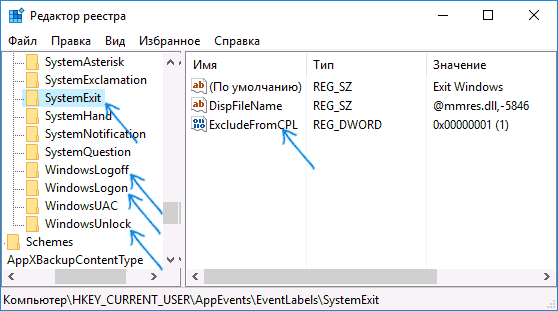В предыдущих версиях Windows пользователь мог изменить системные звуки в «Панель управления» — «Звук» на вкладке «Звуки». Точно так же этом можно сделать и в Windows 10, но в списке доступных для изменения звуков отсутствуют «Вход в Windows», «Выход из Windows», «Завершение работы Windows».
В этой краткой инструкции — о том, как вернуть возможность изменять звуки входа (мелодию запуска) Windows 10, выхода из системы и выключения компьютера (а также разблокировки компьютера), если по какой-то причине стандартные звуки для этих событий вас не устраивают. Возможно также пригодится инструкция: Что делать, если не работает звук в Windows 10 (или работает неправильно).
Включение отображения отсутствующих системных звуков в настройке звуковой схемы
Для того, чтобы появилась возможность изменять звуки входа, выхода и выключения Windows 10, потребуется воспользоваться редактором реестра. Для его запуска либо начните вводить regedit в поиске на панели задач, либо нажмите клавиши Win+R, введите regedit и нажмите Enter. После этого выполните следующие простые шаги.
- В редакторе реестра перейдите к разделу (папки слева) HKEY_CURRENT_USER\ AppEvents\ EventLabels.
- Внутри этого раздела обратите внимание на подразделы SystemExit, WindowsLogoff, WindowsLogon и WindowsUnlock. Они соответствуют завершению работы (хоть это здесь и называется SystemExit), выходу из Windows, входу в Windows и разблокировке системы.
- Для того, чтобы включить отображение любого из этих пунктов в настройке звуков Windows 10, выберите соответствующий раздел и обратите внимание на значение ExcleudeFromCPL в правой части редактора реестра.
- Кликните по значению дважды и измените его значение с 1 на 0.
После того, как вы выполните действие для каждого из нужных вам системных звуков и зайдете в настройки звуковой схемы Windows 10 (это можно сделать не только через панель управления, но и через правый клик по значку динамика в области уведомлений — «Звуки», а в Windows 10 1803 — правый клик по динамику — параметры звука — открыть панель управления звуком).

Там вы увидите необходимые пункты с возможностью изменять звук для включения (не забудьте отметить пункт Проигрывать мелодию запуска Windows), выключения, выхода и разблокировки Windows 10. Обновление: для изменения мелодии запуска в Windows 10 последних версий потребуется выполнить шаги, описанные в этой инструкции.
Вот и всё, готово. Инструкция получилась действительно компактной, но, если что-то не получается или работает не так, как ожидается — задавайте вопросы в комментариях, будем искать решение.
Windows 10’s startup sound can be customized to play your favorite song or any other sound you like. If you get tired of Windows 10’s dull startup sound, you can change it to something you prefer.
To play a custom tune whenever your computer turns on, you must enable the startup sound setting. Otherwise, Windows 10 won’t start up with a startup sound.
First, you will need to disable fast boot. Once you have done that, you will be able to enable the startup sound.
Our gearupwindows article will walk you through every step required to enable Startup Sound in Windows 10.
How to Turn Off Fast Startup on Windows 10?
To disable the Fast Startup on Windows 10, follow these steps:-
Step 1. Open the Settings app by clicking the Start button, followed by the Settings icon.
Step 2. Click on the System category in the Settings window.
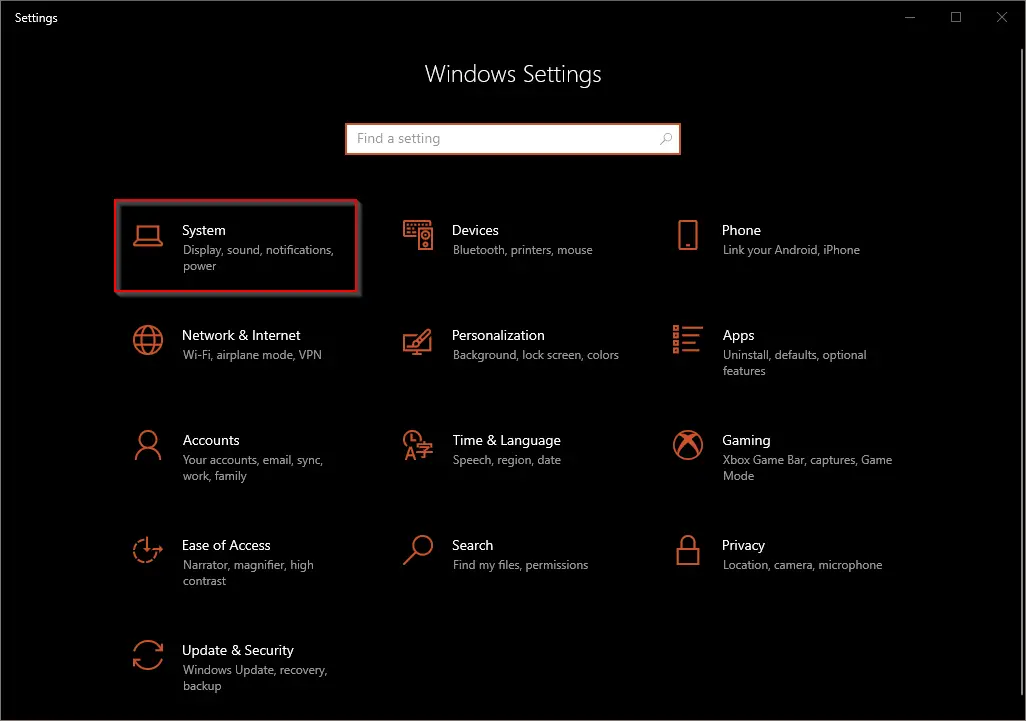
Step 3. Under “System,” click thePower & sleep tab.
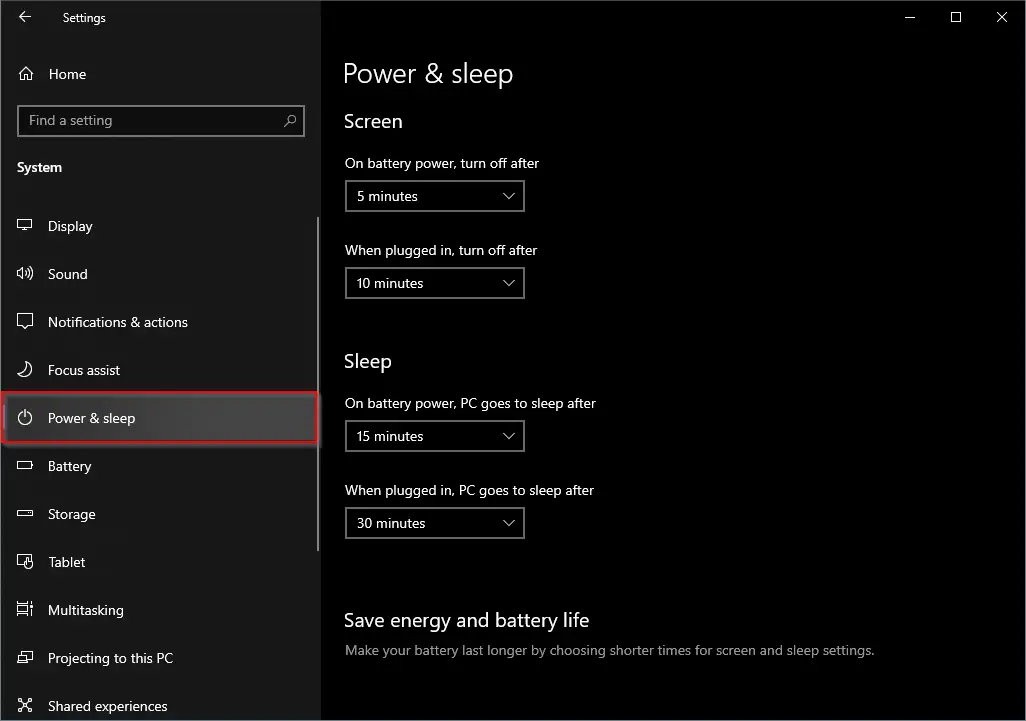
Step 4. Click the Additional power settings link on the right sidebar under the “Related settings” section.
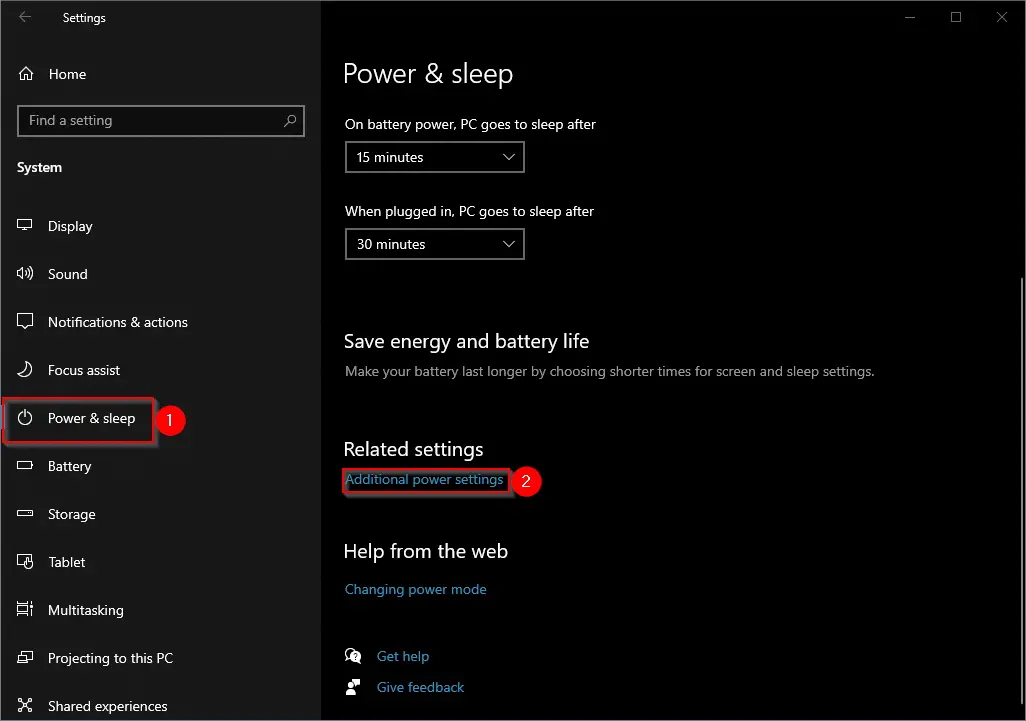
Step 5. In the Power Options window that opens, click the link “Choose what the power button does.”
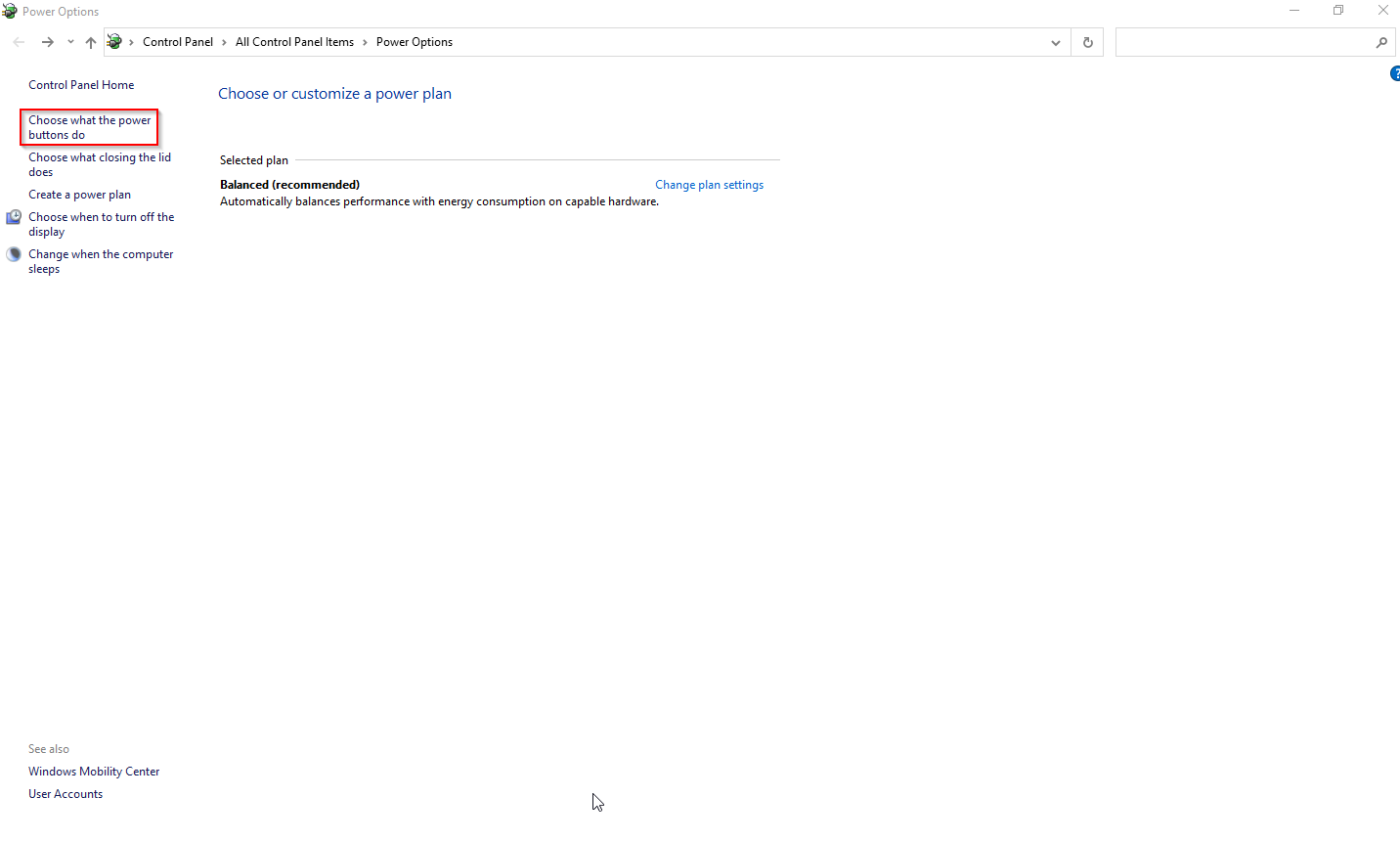
Step 6. Next, click the link “Change settings that are currently unavailable.”
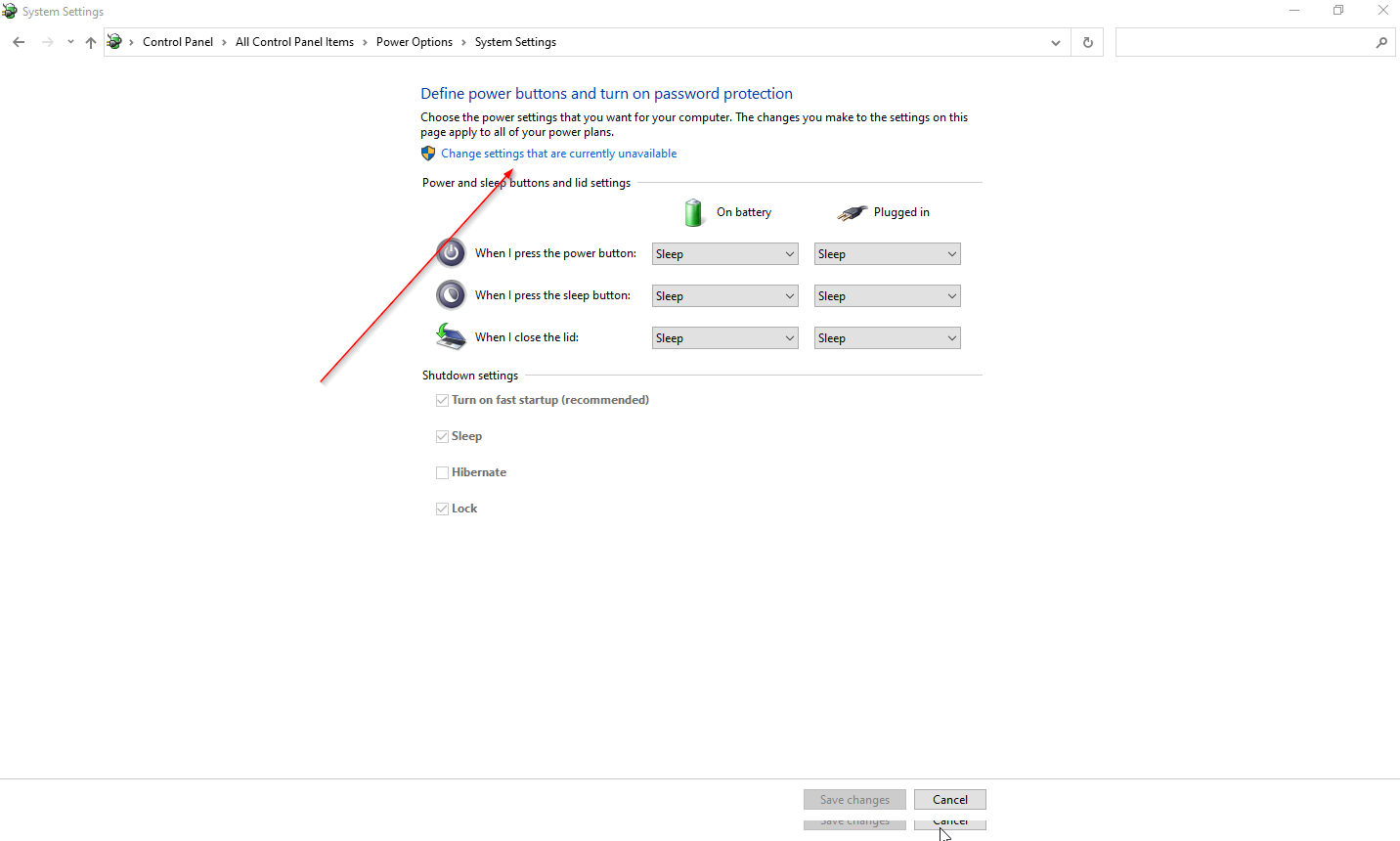
Step 7. Under the “Shutdown settings” section, uncheck the “Turn on fast startup” option.
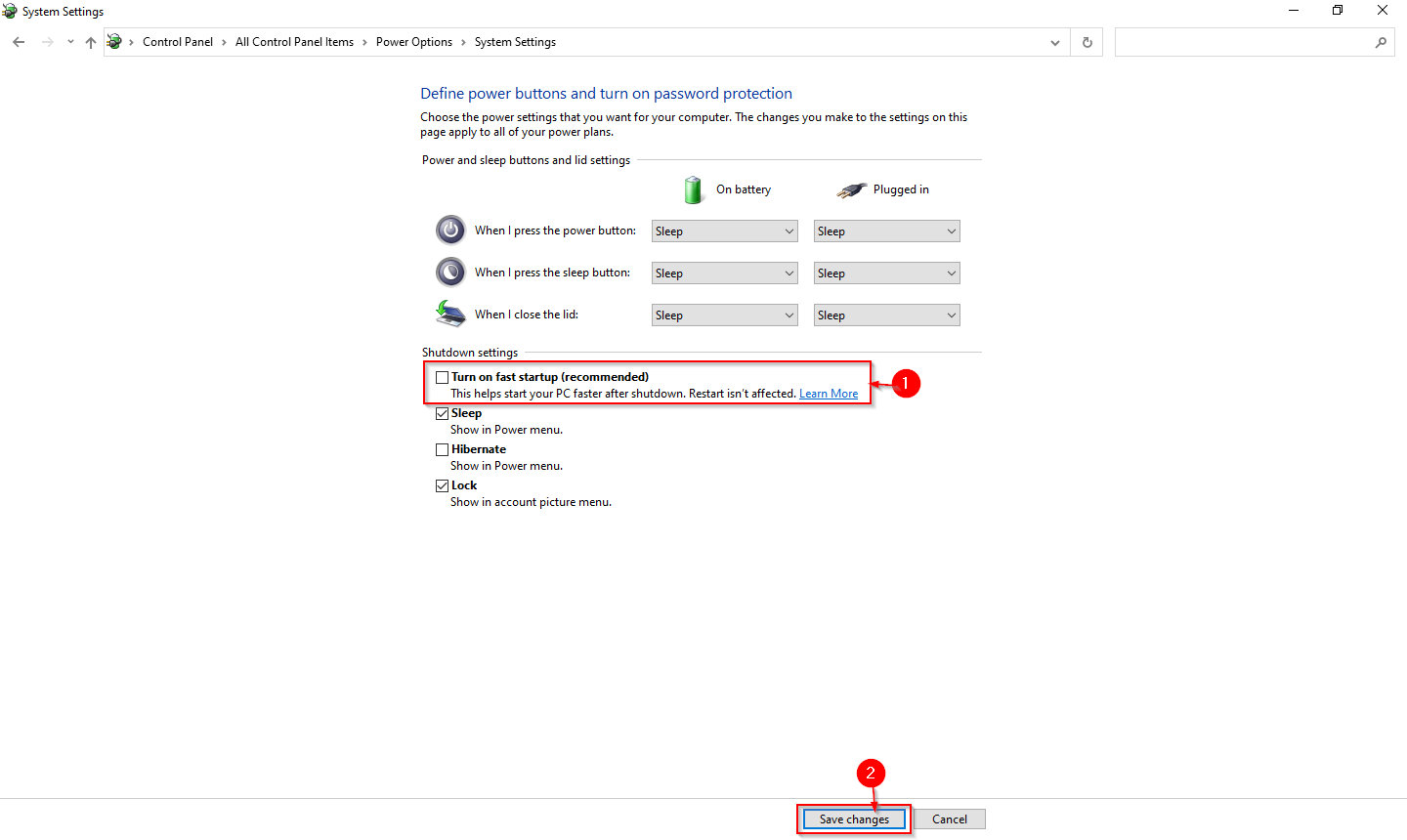
Step 8. Finally, click theSave changes button.
Following the above steps, the Fast Startup feature will be turned off on your Windows 10 machine.
How to Enable Windows 10 Startup Sound?
Now that fast boot has been disabled; you can turn on the startup sound. The process is as follows:-
Step 1. Right-click the speaker icon on Taskbar and select Sounds in the menu to open the Sound window.
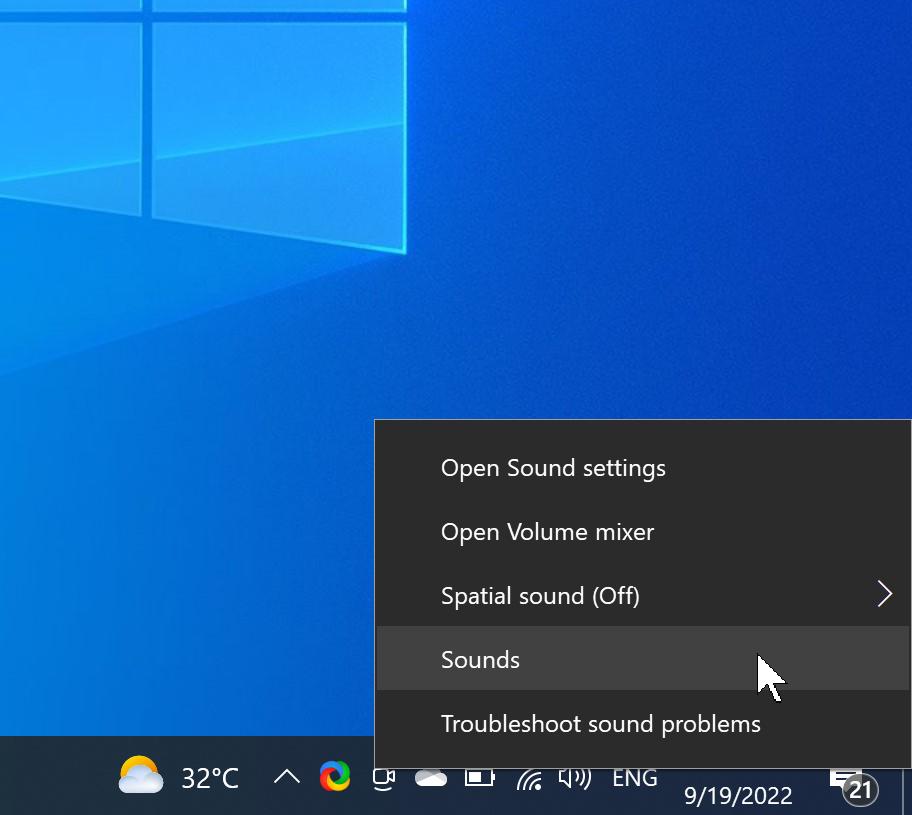
Step 2. Switch to the Sounds tab under the Sound window.

Step 3. Check the Play Windows Startup sound checkbox.
Step 4. Click the Apply button.
Step 5. Click the OK button.
Now, whenever you turn on your computer, you will hear the Windows 10 startup sound.
How to Change the Windows 10 Startup Sound?
Sadly, Windows 10 doesn’t let you customize the startup sound. To set a custom sound as your Windows 10 startup sound, you’ll need to install a third-party app or edit the Registry file.
The Startup Sound Changer is a freeware program that allows you to change the default Windows startup sound. With a simple and convenient interface, you can apply any WAV file of your choice and customize it quickly.
Follow these steps to modify or change the Windows 10 Startup sound:-
Step 1. First, download Startup Sound Changer.
Step 2. Then, double-click on the downloaded portable executable file to open it.

Step 3. Next, click on the Replace button.
Step 4. Select a custom “.wav” file from your PC. If you don’t have one, choose one from the “C:\Windows\Media” folder.
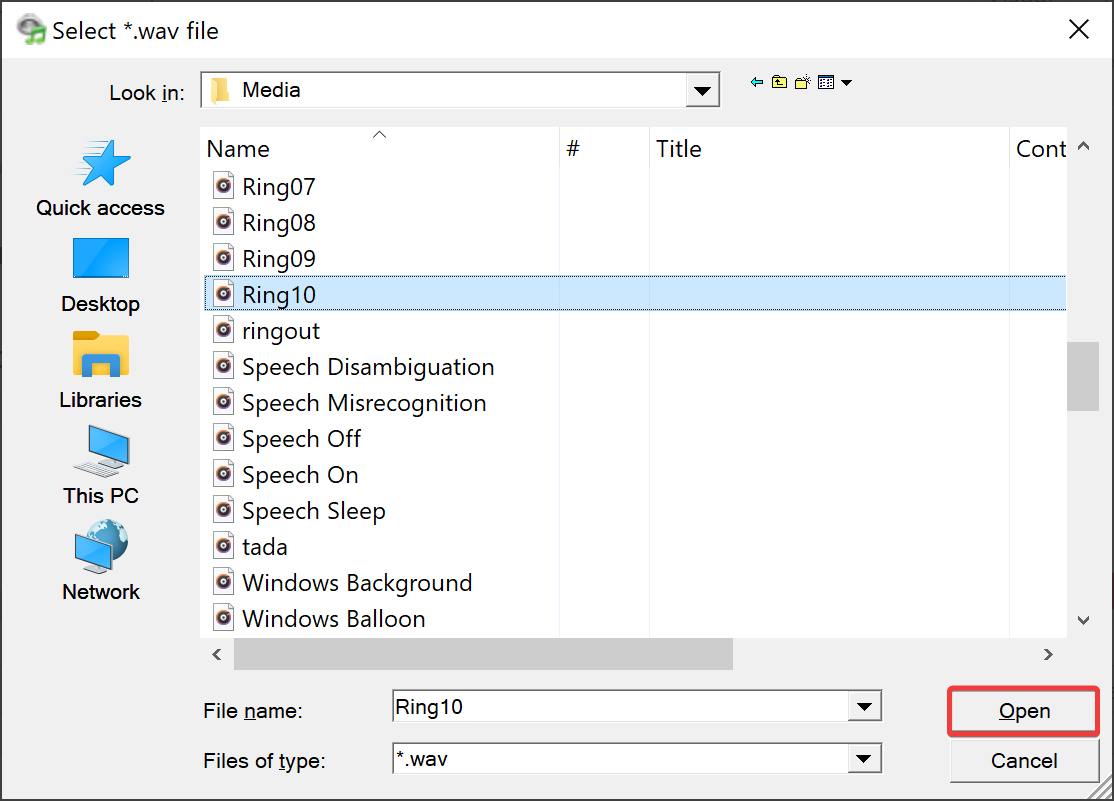
Step 5. Click the Open button.
That’s it. After restarting your Windows 10 machine, you will hear the new sound.
Quick Note: Sounds file must be stored in “C:/Windows/Media.” If you put them in another folder, Windows won’t find them.
How to Modify Startup and Shutdown Sound Registry Files?
If the Windows Logon (Startup) and Windows Logoff (Shutdown) options are missing in the Sound window, you need to enable the same from Registry Editor.
These steps will guide you through editing the Startup Sound registry files:-
Step 1. Open Registry Editor.
Step 2. In the left sidebar of the Registry Editor, click the following key:-
Computer\HKEY_CURRENT_USER\AppEvents\EventLabels\WindowsLogon

Step 3. Double-click on the REG_DWORD named ExcludefromCPL on the right sidebar.
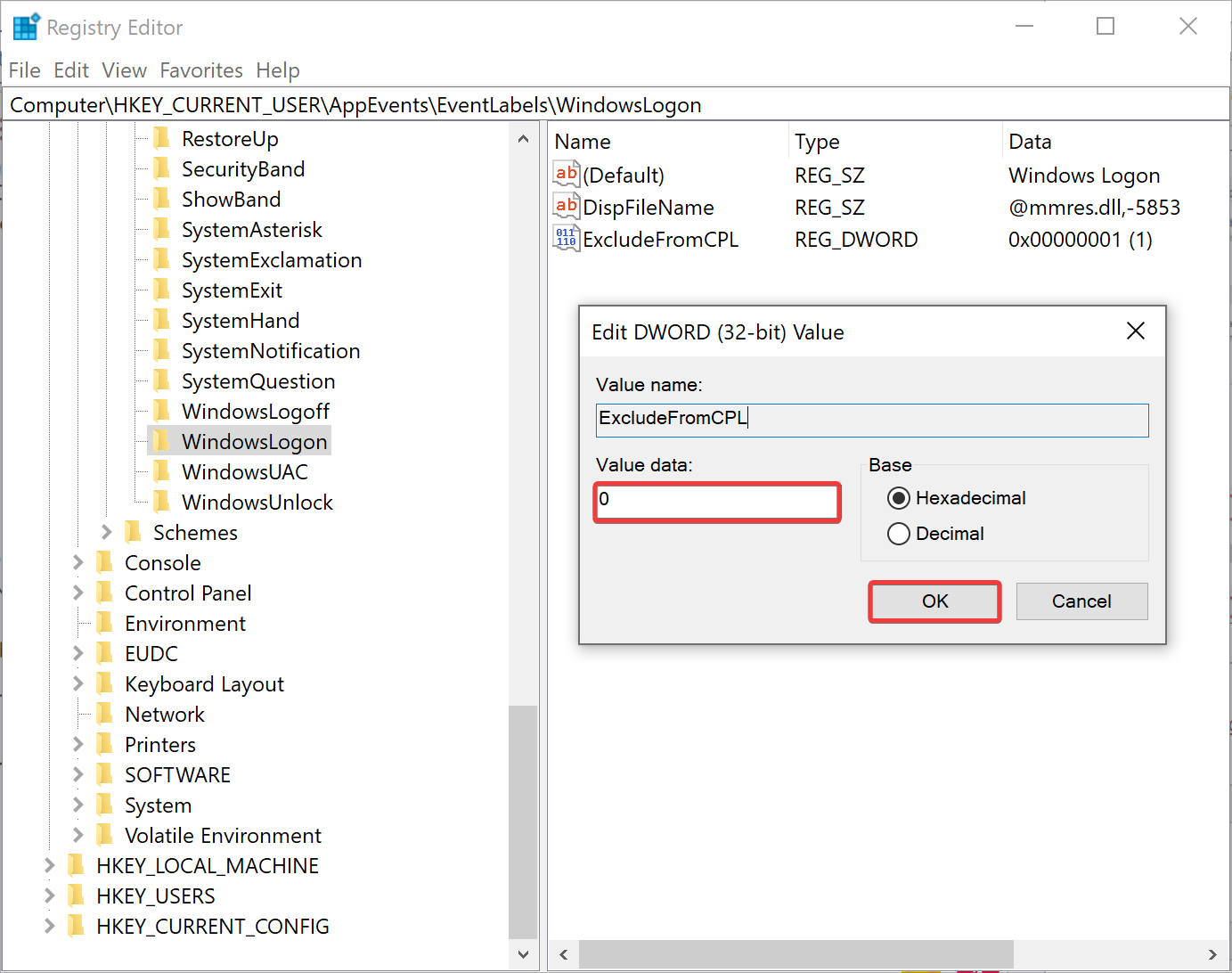
Step 4. Change the “Value data” from 1 to 0.
Step 5. Click the OK button to enable the Windows Logon option in the Sound setting.
Step 6. Similarly, if you want to enable the Shutdown or Windows Logoff sound setting, navigate to the following Registry key:-
Computer\HKEY_CURRENT_USER\AppEvents\EventLabels\WindowsLogoff
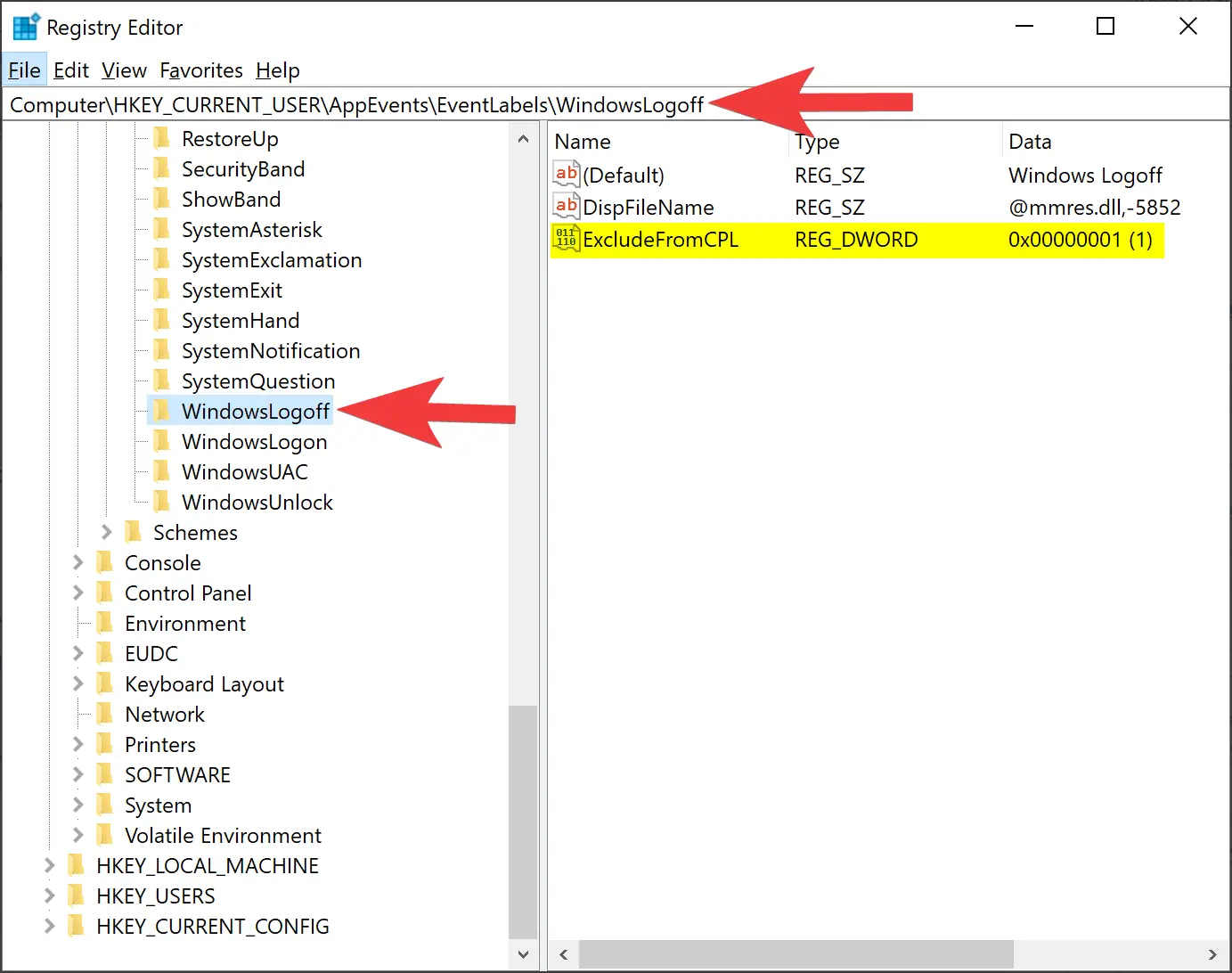
Step 7. Double-click on the REG_DWORD named ExcludefromCPL on the right sidebar.

Step 8. Set its “Value data” to 0 to enable the Windows Logoff option.
Step 9. Click the OK button.
That’s it. There is no need to restart your Windows 10 machine. Both Windows Logon and Windows Logoff options will now appear in the Sound window.
As soon as you have enabled the Windows Logon and Windows Logoff options in Sound settings for your Windows 10 machine, you can apply a custom sound from the Sound dialog. Here are the steps:-
Step 1. Right-click the speaker icon on Taskbar and select Sounds in the menu to open the Sound window.

Step 2. Switch to the Sounds tab under the Sound window.

Step 3. Check the Play Windows Startup sound checkbox.
Step 4. Now, select either Windows Logoff or Windows Logon option you want to change the sound for.
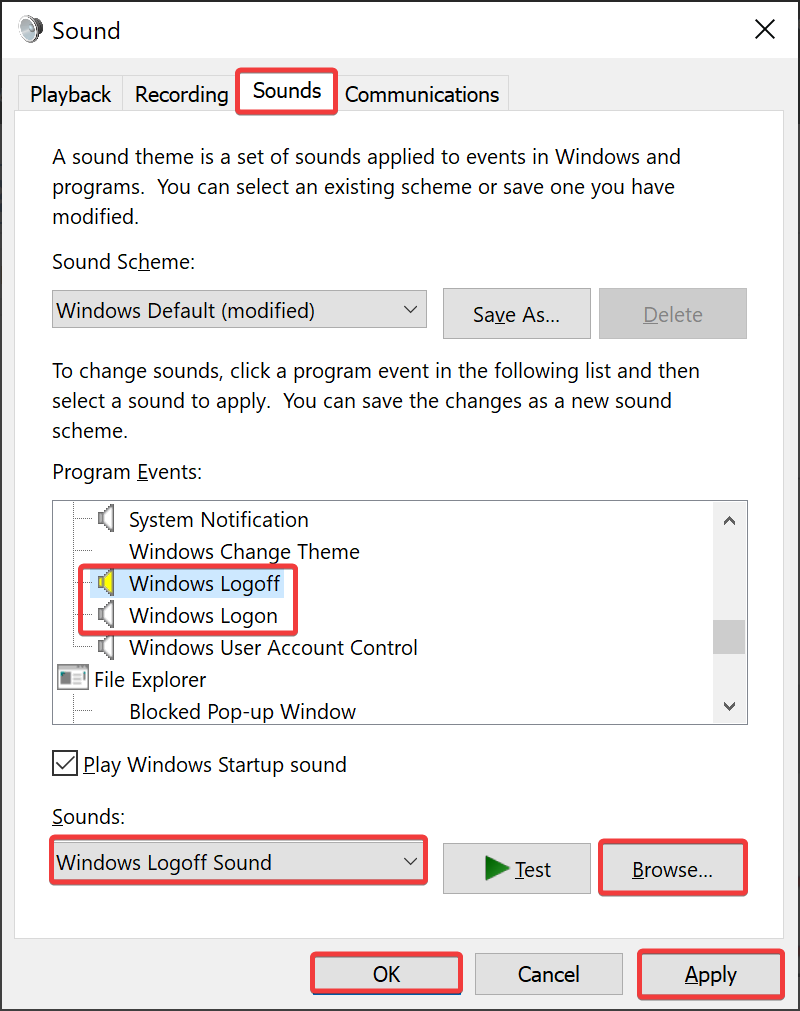
Step 5. Select preferred sound from the Sounds drop-down menu. Alternatively, click the Browse button and select the sound file (.wav) from the “C:\Windows\Media” folder you want to set.
Step 6. If you wish, you can choose to listen to the sound before applying it by clicking the Test button.
Step 7. Click the Apply button.
Step 8. Click the OK button.
For Windows 10, the maximum length of a startup or shutdown sound is between 4 – 6 seconds. If you change your computer’s startup or shutdown sound but still play the default jingle, it’s most likely due to its length.
Use an online audio cutter or trimmer (such as Clideo.com) to trim the audio file (in WAV format) to 4 to 6 seconds and try it again.
Good luck.
Conclusion
In conclusion, Windows 10 provides an easy way to customize the startup sound. You can change the default sound to your favorite song or any other sound of your choice by disabling the fast startup and enabling the startup sound feature in the Sounds tab. Unfortunately, Windows 10 does not offer an option to customize the startup sound, but you can use a third-party app like the Startup Sound Changer to modify it. Additionally, modifying the registry files can help you enable the Windows Logon and Windows Logoff options in the Sound window to apply a custom sound. By following the steps provided in this article, you can easily enable and customize the startup sound in Windows 10.
If you want to play a sound when you shut down, lock, or unlock your Windows 11/10 computer, then this article will show you how to do it. Although Microsoft removed this functionality to improve the performance and user experience, you can use the Task Scheduler to perform this task.

To create an automated task to play a shutdown sound, you must sign in as an administrator. Also, if you want to play custom audio, you need to convert your regular .mp3 file to .wav format.
To play a sound when you Shutdown, Lock, or Unlock Windows 11/10, follow these steps:
- Open the Task Scheduler app.
- Create a new task.
- Configure system shutdown as the ‘trigger’
- Configure an action to play custom sound using a PowerShell script.
- Save the task.
Let us have a detailed look at these steps.
1] Open the Task Scheduler app
Type ‘task scheduler’ in the Windows Search bar and click Open next to the Task Scheduler app that appears on top of the search results.
2] Create a new task
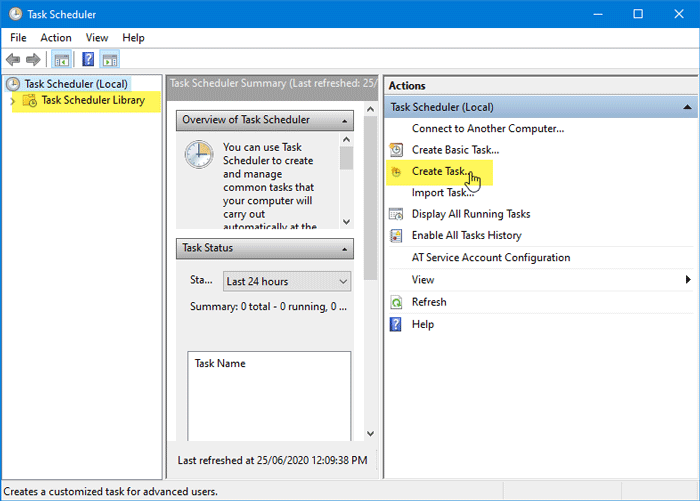
Now, you need to select Task Scheduler Library on the left side and click on the Create Task button on your right side.
In the General tab, write the name of your task in the Name field on top. Then under the Security options section, select the ‘Run whether user is logged on or not‘ option, and select the Run with highest privileges checkbox.
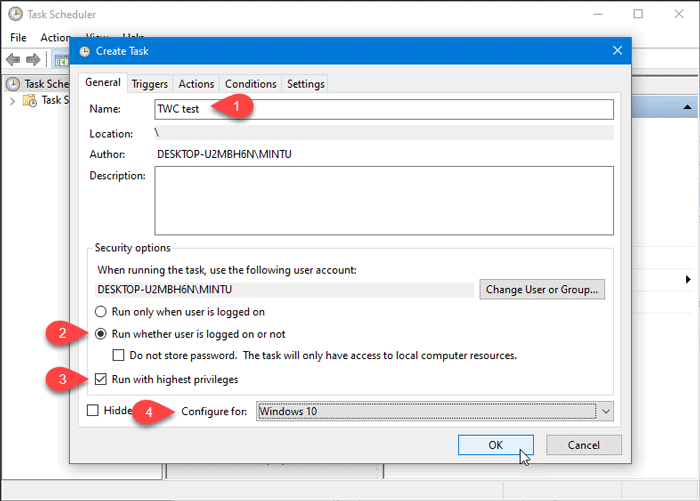
After that, expand the Configure for drop-down list at the bottom and select Windows 10. Windows 11 users should also select the ‘Windows 10’ option. This option works with both Windows 11/10.
3] Configure system shutdown as the ‘trigger’
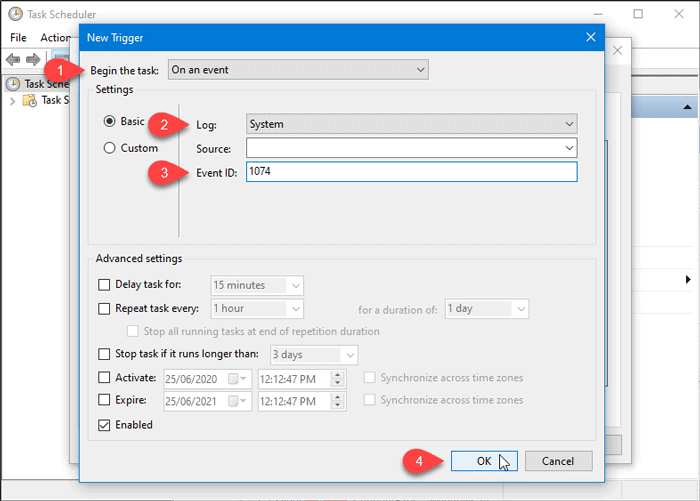
Next, you need to switch to the Triggers tab and click the New button.
In the New Trigger window, select On an event from Begin the task drop-down list, System from the Log drop-down list, and enter 1074 as the Event ID. 1074 represents user-initiated shutdown.
Click OK to continue.
4] Configure an action to play custom sound using a PowerShell script
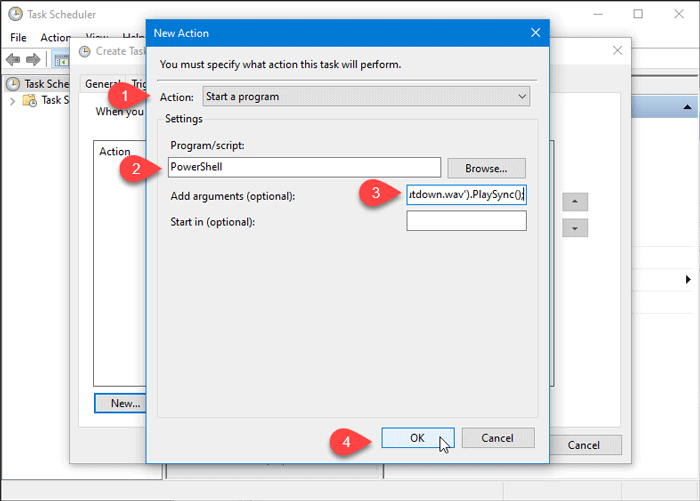
Next, you need to switch to the Actions tab and click the New button.
In the New Action window, select Start a program from Action drop-down list, write PowerShell in the Program/Script box, and enter the following argument in the Add arguments box-
-c (New-Object Media.SoundPlayer 'C:\Windows\Media\Windows Shutdown.wav').PlaySync();
C:\Windows\Media\Windows Shutdown.wav is the default shutdown sound.
If you want to use custom audio, you need to place the audio file in the C:\Windows\Media\ folder and select the path in the argument.
After clicking the OK button, you need to go to the Conditions tab. From here, you need to uncheck the Start the task only if the computer is on AC power option.
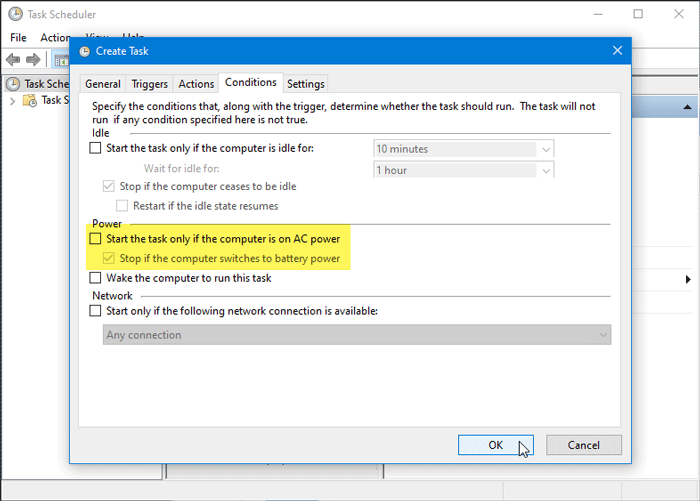
5] Save the task
Click OK to save the task. Now you should see a prompt where you have to enter the user account password. Enter the password and click OK.
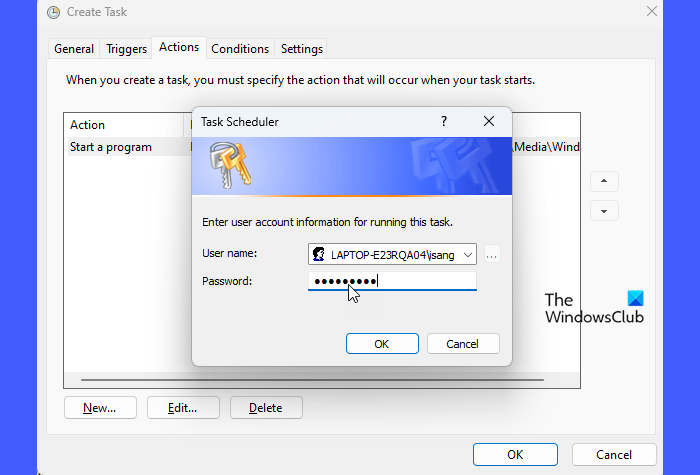
If you do that successfully, a new task will be created and your Windows 11/10 system will play the set sound when you shut down the PC.
If you want to play a sound when you Lock or Unlock your Windows 11/10 computer, you can follow the same steps. The only difference is that you need to select On workstation lock or On workstation unlock under the Begin the task dropdown in the New Trigger window.
That’s all! I hope you find this useful.
Read: How to disable System Beep in Windows.
How do I play Windows startup sound?
Click the Start button icon on your Windows 11/10 PC and select Settings. The Settings window will appear. Navigate to Personalisation > Themes. Then click the Sounds option on top. The Sound dialogue will appear. Check the ‘Play Windows Startup sound‘ option to enable the Windows startup sound.
Does Windows 11 have a shutdown sound?
Microsoft has removed the logon, logoff, and shutdown sound in newer versions of Windows to make it boot or shutdown faster. However, there are workarounds to enable the shutdown sound in Windows 11. You can create an automated task in the Task Scheduler app to play a custom sound when you shut down Windows. Alternatively, you can create a PowerShell script to play a shutdown sound and set it up for your Windows 11 PC using the Group Policy Editor.
Read Next: Make Windows greet you with a custom Welcome Voice Message & Sound.
Quick Links
-
Add the Actions Back to the Sound Control Panel by Editing the Registry
-
Download Our One-Click Registry Hacks
Before Windows 10 came along, we were free to change the sounds that played when we shut down, logged off, or logged on to Windows. For some reason, Microsoft hid those sound actions from being modified in Windows 10. Here’s how to get them back.
Windows has always been pretty good about letting you customize every nook and cranny of the OS, including what sounds played for all kinds of different system events. You can even make Windows play a sound when you toggle your Caps Lock, Scroll Lock, and Num Lock keys. While you can still customize what sounds sounds play for most OS events, Windows 10 hid shut down, logoff, and logon from view. They’re still around, though. You just need to make a few mild changes in the Windows Registry to get them back.
Add the Actions Back to the Sound Control Panel by Editing the Registry
To add the shutdown, logoff, and logon actions back to the menu in the Sound Control Panel app, you just need to make a few little tweaks in the Windows Registry.
Standard warning: Registry Editor is a powerful tool and misusing it can render your system unstable or even inoperable. This is a pretty simple hack and as long as you stick to the instructions, you shouldn’t have any problems. That said, if you’ve never worked with it before, consider reading about how to use the Registry Editor before you get started. And definitely back up the Registry (and your computer!) before making changes.
Open the Registry Editor by hitting Start and typing “regedit.” Press Enter to open Registry Editor and then give it permission to make changes to your PC.
In the Registry Editor, use the left sidebar to navigate to the following key:
HKEY_CURRENT_USER\AppEvents\EventLabels
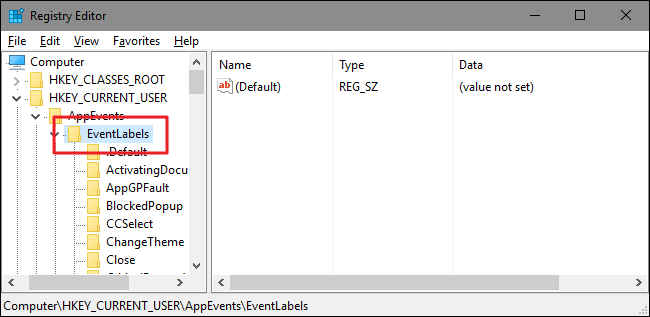
You’re going to be making one small change in each of three different subkeys inside that EventLabels key. First, we’ll tackle the shutdown sound or, as Windows likes to call it, System Exit. Under the EventLabels key on the left side of Registry Editor, select the SystemExit subkey. On the right side, double-click the ExcludeFromCPL value.
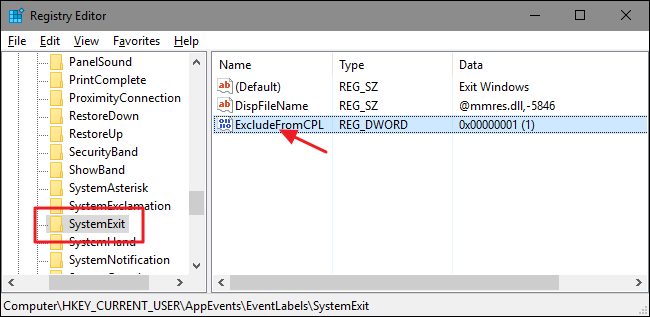
Note that by default, the value is 1, meaning that the action is excluded from the Control Panel. Change the value to 0 and then click «OK.»
Next, you’re going to make exactly the same change in two other subkeys inside the EventLabels key: WindowsLogoff and WindowsLogon . Head into each of those folders, open the ExcludeFromCPL value inside, and change the value from 1 to 0.
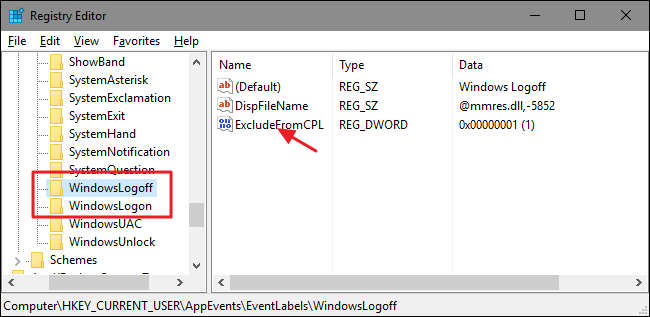
No need to restart Windows. You can go ahead and test your changes right away. Open up the Sound Control Panel app by right-clicking the speaker icon in your Notification Area and selecting «Sounds.»
You should now see the new actions (Exit Windows, Windows Logoff, and Windows Logon) available in the selection window and you can assign whatever sounds you like to those actions.
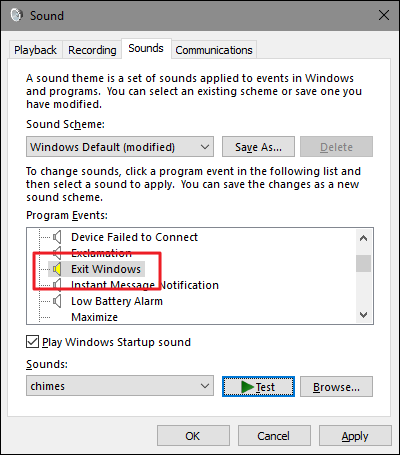
If, for whatever reason, you want to hide those actions from the Control Panel again, just head back into Registry Editor and change each of those ExcludeFromCPL values back to 1.
Download Our One-Click Registry Hacks
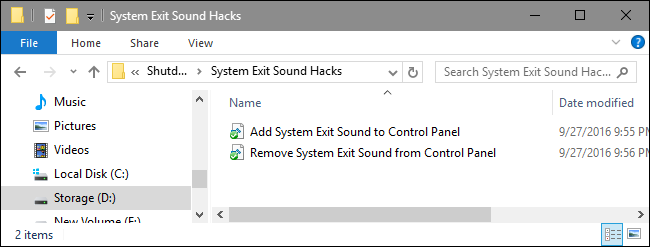
If you don’t feel like diving into the Registry yourself, we’ve created some registry hacks you can use. Download and unzip them first. Inside, you’ll find three folders named «System Exit Sound Hacks,» «Windows Logon Sound Hacks,» and «Windows Logoff Sound Hacks.» Inside each of those folders, you’ll find two hacks: one for adding the action to the Sounds Control Panel and one for removing the action again. Double-click the hack you want to use and click through the prompts. When you’ve applied the hack you want, the changes will take place immediately. No need to restart Windows.
Shutdown-Logoff-Logon Sound Hacks
These hacks are really just the individual SystemExit, WindowsLogoff, and WindowsLogon subkeys, stripped down to the ExcludeFromCPL values we talked about in the previous section and then exported to a .REG file. Running either of the hacks sets that value to the appropriate number. And if you enjoy fiddling with the Registry, it’s worth taking the time to learn how to make your own Registry hacks.

